We truly hope that you, our readers, greatly enjoy reading and learning from this article we present you about these 6 Laudably Luscious Lilies. It’s also our hope that doing so will also fill you with a new or renewed recognition of the awesome beauty found in Nature.
Obviously, however, these few represent only a handful of the 90 currently known and recognized species of lily found throughout the world. It’s our belief, though, that those herein constitute a good cross-selection for you to enjoy viewing and learning about.
Cobra Lily
Cobra Lily Facts
- Leading off this article about these 6 Laudably Luscious Lilies comes the intriguing species most commonly known as the Cobra Lily.
- Quite clearly, the highly descriptive term for this marvel of Nature and evolution serves as the image-creating common name of a fascinating plant. In fact, the name represents the term very often used for a rather unique variety of carnivorous plant.
- Following that, and truly unfortunately, it remains considered extremely uncommon in the wild. It also appears to have a highly limited, and also quite specific habitat range. The IUCN nevertheless presently lists it as a species of Least Concern on its Red List.
- Understandably, the common name of the visually distinctive species derives from its unique physical appearance. That holds true due to the fact that the leaves of the plant generally bear a strong resemblance to a cobra preparing to strike.
- Somewhat mysteriously, the precise method of pollination of this species in the wild still remains completely unknown to researchers. That’s because, surprisingly, there has yet to be a formally organized study of this facet of the remarkable species.
- Presently, the IUCN does not consider the Cobra Lily to be threatened at this time. That status could, however, change in the near future. Much as countless other species around the world, it now faces the growing threat posed by climate change.
Cobra Lily Physical Description
Regardless of its fascinating appearance, the rather astonishing Cobra Lily ranks as a moderate-sized variety of carnivorous plant. That’s because specimens sometimes attain a height of about 33 in (85 cm). Most individuals, however, usually remain smaller.
Each individual member of the species additionally produces several hollow leaves, with no stalks. As these develop, they typically grow to the same approximate length as the single flower. This unique feature, in turn, the plant produces atop a relatively thick stalk.
The leaves of the plant themselves, furthermore, most commonly develop as a somewhat light green in color. But, these also appear streaked with numerous blood-red vein-like features. These only serve to further add to the eerie appearance of the Cobra Lily.
The remarkable leaves also generally display a dark, purplish-red appendage at the tip. Many people consider this part of the plant to resemble the forked tongue of a snake, thus the common name. All these only further enhance the resemblance to its namesake.
- Kingdom: Plantae
- Phylum: Angiosperms
- Class: Eudicots
- Order: Ericales
- Family: Sarraceniaceae
- Genus: Darlingtonia
- Species: D. californica
Cobra Lily Distribution, Habitat, and Ecology
Sadly, the extremely amazing Cobra Lily possesses an extremely limited range of habitation. That’s because this wonder of Nature only grows in a small portion of the globe. That’s the wild areas in portions of California and Oregon, in the United States, in North America.
Even more specific, however, remains the unique habitat requirement of the astonishing carnivorous species. That holds true due to the natue of its environment. In fact, it only grows in seeps and bogs with cold running water and highly nutrient-poor soils.
As with its many related species, furthermore, the Cobra Lily also augments its limited ability to draw nourishment from the soil. This the amazing product of evolution accomplishes by gaining nourishment from insects it succeeds in trapping and digesting.
Its uniqueness, though, presents itself in yet another way. That’s because this species differs from all other pitcher plants in the Americas in one relatively important respect. That’s due to the fact that it does not trap rainwater in its pitcher. Instead, it draws it from the roots.
Pine Lily
Pine Lily Facts
- Next up among our choices for inclusion in the compilation of 6 Laudably Luscious Lilies comes the masterpiece of natural processes known as the Pine Lily.
- Somwhat surprisingly, the simple term for the flora serves as the common name of a beautiful, but often under appreciated variety of lily. It also goes by several other common names. These include the leopard lily, southern-red lily, and the Catesby’s lily.
- Professional researchers, though, have an altogether different term used for it. That’s because this marvel of Nature bears the official scientific name of Lilium catesbaei. Regardless of the name applied, it represents a truly fascinating ad appealing species.
- The seemingly delicate appearance of this flora belies its character, however. That’s because the work of Nature actually displays a remarkable degree of adaptability. In fact, it evolved to inhabit environments normally inhospitable to most types of lilies.
- Surprisingly, the IUCN does not yet list the Pine Lily on its Red List of Threatened Species. That may well change in the future, given changing conditions. The natural beauty nevertheless must be considered to be at risk, due to several factors.
- One of these perils, like many species, consists of habitat loss. This holds true mainly due to human encroachment on its natural habitat. Given the nature of its habitat, though, its most serous threat no doubt consists of ongoing climate change.
Pine Lily Physical Description
Perhaps most notably, the truly gorgeous Pine Lily constitutes a physically impressive type of flora. It also accomplishes this for more reasons than just its beauty. In this it clearly displays its relationship to the many other remarkabale varieties of lilies around the world.
That’s due to the fact that, in addition to its visual appeal, it also attains a much greater size than most. Additionally, as if the other facts weren’t enough, this description actually holds true because of its measurements in entrely two entirely separate categories.
In point of fact, the seemingly delicate plant ranks as the largest variety of lily on the continent on which it evolved. Yet the wonders do not end there. For starters, the long and thin, but relatively strong, straight stalk attains an average height of roughly 2 ft (61 cm).
Atop these stalks, furthermore, the plant produces its remarkably beautiful, large flowers. These blooms attain an average width measuring roughly 6 in (15 cm). Each of those same stalks also most commonly possesses only a few, comparatively small leaves.
Each of the large, magnificent blooms of the amazing Pine Lily produces a total of six separate tepals. These bend sharply outward from the center. Within the center stands a total of six thin stalks, topped with small structures, in which it produces its seeds.
This creation of Nature and evolution also dazzles those who encounter it with its array of hues. These natural colors also tend to vary significantly. The great majority, however, tend to be bright, primarily orange, with multiple spots. Other shades also occur occasionally.
- Kingdom: Plantae
- Phylum: Angiosperms
- Class: Monocots
- Order: Liliales
- Family: Liliaceae
- Genus: Lilium
- Species: L. catesbaei
Pine Lily Distribution, Habitat, and Ecology
Most unfortunately for those who appreciate it, the visually beautiful and impressive species commonly known as the Pine Lily inhabits a somewhat restricted range. Part of that lamentable fact, however, stems from its very nature. This sometimes happens in Nature.
For the moment, though, it remains unknown if this marvelous flora ever possessed a greater range. Given its particular environmental requirements, though, this appears to be unlikely. Research nevertheless remains ongoing into this, and other aspects of its nature.
That range consists of only a relatively small portion of North America. More specifically, it evolved as endemic to the coastal regions of southeastern United States. As a result, the plant appears in an area that extends roughly along the east coast, from Alabama to Virginia.
The majority of individuals appear in Florida. That’s understandable, given its physical needs. That’s because this variety of lily prefers very damp areas and requires a specific environment to thrive. This includes warm temperatures, high humidity, and acidic soil.
Although the Pine Lily requires warmth, it does not tolerate direct sunlight well. Yet, the astonishing Angiosperm also prefers a very specific, and uncommon, soil type. Incredibly, this fabulous wonder of Nature actually prefers regions containing a high level of acidity.
Canna Lily
Canna Lily Facts
- Placing third in this posting of 6 laudably Luscious Lilies, though only due to random selection, comes the visually stunning Flora named the Canna Lily.
- Interestingly, the simple term for tge species serves as the collective name of any of the related flowering plants placed within a specific genus. Currently, scientists place a total of 19 distinct species within this visually and scientifically impressive group.
- Continually ongoing investigations could potentially add to that number, however. The shared name of this remarkable group actually remains somewhat deceptive in nature. Despite that name, this quite beautiful plant does not represent a true lily.
- In point of fact, its closest relatives may actually surprise most of you. That’s because those consist of species most people would never associtate with these magnificent blooms. That’s because they include the various forms on gingers and bananas.
- Numerous tribes of Native Americans also cultivated these incredible plants for centuries. These ancient civilizations clearly recognized their value as more than just visual. In point of fact, various parts of the plant actually hold many surprising uses.
- Due to that, this wonder of Nature holds a special place in the history of its region. It represents one of the earliest domesticated plants in its part of the world. This occurred because, surprisingly, the starchy root itself can be safely consumed.
- Many of the varieties of this remarkable beauty now find themselves facing numerous threats, though. These primarily consist of habitat loss and climate change, like many other species. As a result, several types of Canna Lily now appear on the IUCN Red List.
Canna Lily Physical Description
Given the sheer number of different species of Canna Lily, certain characteristics understandably vary. Some of these, in fact, vary somewhat significantly. Conversely, however, some of the basic physical traits naturally remain consistent between each of them.
For starters, all presently recognized members of this genus share the most basic environmental requirements. Each of them further evolved in either of two specific climates. That holds true since all varieties appear as either tropical or subtropical perennial herbs.
Following that, the abundant and remarkable leaves of each of them also display the same basic patterns. That’s due to the fact that the foliage develops as relatively broad and flat in all of the accepted forms. But, the impressive nature of these does not end there.
In fact, these structures grow out of a stem in a long narrow roll and then unfurl to their full extent. Both the leaves and stems of the plants also typically display a solid green color. Sometimes, however, both show either maroon, brownish, or even variegated in color.
All known forms of the Canna Lily further share similarities in the nature of their blooms. That’s because the flowers typically develop with brilliant colors, such as hues as orange, red or yellow. Some forms of this lily sometimes grow to heights of as much as 9.8 ft (3 m).
- Kingdom: Plantae
- Phylum: Angiosperms
- Class: Monocots
- Order: Zingiberales
- Family: Cannaceae
- Genus: Canna
Canna Lily Distribution, Habitat, and Ecology
Lamentably, the gorgeous Canna Lily genus evolved as native to a somewhat limited portion of the globe. More specifically, this region consists of the tropical and sub-tropical regions of both Americas. This also includes the southern United States, in North America.
That region mainly consists of the area from South Carolina to Texas. They further appear as deep into South America as parts of the country of Argentina. The genus, however, also now exists in areas with compatible climates throughout the world, due to commerce.
Within their native range, the plants nevertheless only inhabit certain specific climates. They therefore show themselves to be moderately adaptable. The plant nevertheless thrives best in most warm climates, as long as it acquires at least 6-8 hours of sunlight.
Many uses further exist for this remarkable plant, varying in different parts of the world. Some uses of the Canna Lily include using the seeds in the making of jewelry. Others, meanwhile, actually include fermenting the petals to make an alcoholic beverage.
But the usefulness of this fascinating and beautiful flora does not simply end there. That holds true given the fact that it’s also used in the production of a bright purple dye. Some individuals occasionally even use smoke from the burning plant as an insecticide.
Blood Lily
Blood Lily Facts
- Next up among our entries into this compendium of 6 Laudably Luscious Lilies comes the visually distinctive flower named the Blood Lily.
- The unique and truly remarkable variety represents a highly fascinating plant that has a background that may surprise many of you. The distinctive term, however, represents only one its common names. In point of fact, it has several alternate names.
- Among others, these include the fireball lily, the Katherine-wheel, the oxtongue lily, the poison root, and the powderpuff lily. Professional researchers, though, typically refer to it by its somewhat cumbersome technical name of the Scadoxus multiflorus.
- That tongue-twisting term was given to it by the French researcher, Constantine Samuel Rafinesque. This term he applied to the plant in the year 1838. That action, though, represented a renaming of the species, moving it to an entirely different genus.
- This marvel of Nature originally bore the name of the Haemanthus multiflorus, however. The English botanist Thomas Martyn made the first recognition of it as a separate and distinct species. This noteworthy even occured in the year 1795.
- Because of its unique appearance, it makes for a beautiful ornamental plant, often used by gardeners for that exact purpose. Indigenous People have also long used the plant in native medicines. In this, it mirrors the traits of many indigenous flora.
- For now, the Blood Lily appears to have a sufficient and stable population across its range. The IUCN therefore has no listing for it on its Red List. Given the nature of its habitat, it could be at risk. Its greatest threat likely consists of ongoing climate change.
Blood Lily Physical Description
The truly stunning Blood Lily merits admiration for more than just its unique appearance. That’s because it evolved a highly fascinating physical characteristic. That occurs due to the fact that the remarkable plant constitutes both a perennial and an evergreen.
As a result of this, specimens grow from either rhizomes or bulbs. This makes the species highly versatile and relatively successful. But, while it impresses for many reasons, sheer physical size isn’t among them. Individuals rarely attain a height in excess of 10 in (25.4 cm).
Yet this incredible work of Nature and evolution has other sights to offer those fortunate enough to encounter it. For one, the leaves of the plant generally grow comparatively large and thin in shape. These further remain green throughout the entire year.
The blooms themselves also garner great attention, and merit it. The flower heads develop uniquely, typically showing a bright red color, thus the common name. Each head also consists of nearly 200 small flowers. Each plant further grows one head only.
However, the gorgeous Blood Lily has one failing. The bloom, unfortunately, has a short lifespan of fewer than two weeks. Many berries additionally develop after the bloom. These most commonly remain small and relatively numerous. The berries begin as green and slowly redden.
- Kingdom: Plantae
- Phylum: Angiosperms
- Class: Monocots
- Order: Asparagales
- Family: Amaryllidaceae
- Genus: Scaxodus
- Species: S. multiflorus
Blood Lily Distribution, Habitat, and Ecology
The fabulous plant known most commonly as the Blood Lily holds yet more surprises for those who learn of it. That’s partly because it evolved as native to a surprising habitat range. In point of fact, it evolved endemically to a region of the globe that might surprise you.
That’s because the fascinating flora evolved as native to moderately arid sections of the globe. More specifically, this beautiful variety of flora appears in both sub-Saharan Africa and the Arabian Peninsula. The actions of man have also now spread it all the way to Mexico.
Even within this territory, however, the fascinating plant has decidedly specific preferences for its choice of habitat. This only serves to augment its uniqueness, though. These preferences consist primarily of regions appearing at either low or medium altitudes.
Inside of those ranges, however, the plant shows a surprising fecundity. Areas in which it develops include regions such as woodlands, secondary forests, montane grasslands, savannas, and even coastal scrub. In this way, the Blood Lily perfectly shows its adaptability.
This Angiosperm actually develops in different ways in the different habitats. Firstly, the plants appearing in temperate regions generally spread via bulbs. The tropical populations, meanwhile, generally spread via rhizomes, and usually appear in well-drained areas.
Amazon Lily
Amazon Lily Facts
- In this spot on our listing of our choices for including in this article about 6 Laudably Luscious Lilies comes the informatively-named Amazon Lily.
- Firstly, the name for the wonder of Nature serves as the term applied to a genus of beautiful Neotropical flowering plants. Plus, a total of roughly 20 species constitute this group. All of them, however, hold a close relationship with the Amaryllis family.
- Due to its beauty, many, quite understandably, hold a great love for all varieties of these flowers. This appreciation of the wonder of Nature has also led to the development of numerous hybrids. Many more are still under development, as well.
- The common term Amazon Lily, however, most commonly applies to only 2 specific species within this grouping. Understandably, these particular species have been extensively cultivated by humans for an greatly prolonged period of time.
- Many of forms of the stunning flower further have yet another claim to fame. That’s the fact that numerous types have now become naturalized in regions outside of its endemic range. This patently speaks to its great adaptability.
- All this extreme natural beauty nonetheless hides a truly dark secret. That’s due to the fact that all parts of this little beauty contain powerful toxins. As a result, ingestion of even a small quantity of the plant by humans can prove fatal.
Amazon Lily Physical Description
The Amazon Lily evolved as a perennial plant in nature. The species grows from a small bulb, typically placed just beneath the surface of the soil. In addition, its varieties can vary slightly in size. Most types, though, average a height measuring roughly 31 in (80 cm).
The leaves of the various types of this plant also have their own appeal to some. This foliage ranges in overall length from an impressive 8-22 in (20-55 cm) in length. Impressively, the delicate flowers of the various forms also average 2 in (5 cm) in diameter.
These beautiful blooms also typically develop star-shaped. This lovely part of the plant commonly shows a bright white in color. Quite remarkably, the flowers of the beautiful Amazon Lily also remain known for possessing a very strong, pleasant scent.
These also generally appear in small groupings. When these develop, they generally number 3-10 blooms. Especially relevant remains the fact that the color of the interior central structure often has a remarkable light green tint. This creates a striking effect.
- Kingdom: Plantae
- Phylum: Angiosperms
- Class: Monocots
- Order: Asparagales
- Family: Amaryllidaceae
- Genus: Eucharis
- Species: E. amazonica
Amazon Lily Distribution, Habitat, and Ecology
To no great surprise, the endemic range of the known types of Amazon Lily serves as perhaps its most noteworthy feature. That holds true due to the fact that this perennial plant only appears in the Amazon regions of either South America or Central America.
More precisely, though, this area of habitation extends from Guatemala to Bolivia. Very interestingly, a few of them have also become naturalized in other regions of the world. These other areas include Mexico, the West Indies, and even a few tropical islands.
It has adapted to high heat and humidity, as a result of this. Despite this, it most commonly occurs in shaded areas. Also, the various forms of Amazon Lily grow best in certain specific soils. That includes areas consisting of a combination of loam and sand.
Finally, these incredible beauties also typically bloom in the spring. Variations of this theme nevertheless do exist, of course. As a result of this fact, some species will also bloom multiple times throughout the year, under the right conditions.
Sego Lily
Sego Lily Facts
- Filling the last spot in our list of 6 Laudably Luscious Lilies, though only because of random selection, comes the stunning Sego Lily.
- Perhaps most notably, the term for this natural work of art serves as the generally accepted common name for a particularly lovely type of lily. The flower also goes by the somewhat difficult to pronounce scientific name of the Calochortus nuttallii.
- Regardless of which term one uses to refer to it, though, this gorgeous plant represents a particularly marvelous member of its genus. This marvel of Nature received its name in honor of the respected English botanist and zoologist, Thomas Nuttall.
- This occurred subsequent to its first official recognition, by the American botanists John Torrey and Asa Gray. In addition, working together, the two scientists made the initial description of the amazing species, in the year 1857.
- Quite fortunately, the beautiful Sego Lily appears to be maintaining a sufficient and stable population. This fortunate situation further appears to be true throughout the entirety of the native range of the delicate variety of flora.
- There, the IUCN presently has no listing for the Angiosperm on its Red List of Threatened Species. It nevertheless must be considered to be at potential risk. Its greatest threats, though, likely come in the form of habitat loss and climate change.
Sego Lily Physical Description
Although the breathtaking Sego Lily fully merits appreciation, it does not do so based solely on sheer size. In fact, regardless of its many other attributes, it ranks as an average-sized specimen. Physically, it does distinguish itself in one manner, though.
That’s the fact that individual plants of this remarkable species quite frequently vary significantly in terms of overall height. In point of fact, quite surprisingly, individual plants of the Sego Lily generally range in height from 6 – 18 in (15 – 45 cm).
This manifests itself in terms of a single tall, thin stalk. The leaves, meanwhile, appear few in number, and thin, and highly elongated. Also, at the end of each of these, a single bloom appears. When open, this flower averages 3 in (7.6 cm) in diameter.
It also presents a striking color scheme to the eye. That’s because the petals usually white, with dark red and yellow markings at the base. However, on occasion, yellow petal develop, instead of the white. The fruit of the species develops as a single capsule.
- Kingdom: Plantae
- Phylum: Tracheophytes
- Class: Angiosperms
- Order: Liliales
- Family: Liliaceae
- Genus: Calochortus
- Species: C. nuttallii
Sego Lily Distribution, Habitat, and Ecology
First of all, the magnificent Sego Lily stands out for yet another reason. This wonderful plant evolved as native to a moderately large region of the world. This zone of habitation more specifically consists of a specific portion of the continent of North America.
More precisely, however, this delicate wonder of Nature developed in what now constitutes the western regions of the United States. Within that area, the beautiful variety of lily currently inhabits a total of 11 states, covering much of the western part of the country.
For the moment, it remains unknown whether or not it ever existed beyond this range. But, even within this already restricted range, the amazing species of flora possesses specific requirements for the type of habitat in which it appears.
Consequently, except for individual stragglers, the bulk of its population appears in three specific habitats. These consist of areas of sagebrush in the foothills, various dry valleys, and, for unknown reasons, specifically groupings of ponderosa pines.
The Sego Lily also had multiple cultural uses. The Native American tribes sharing its range used it in several ways. Firstly, the bulbs were often used to make a porridge. Secondly, they consumed the dried seeds. Thirdly, the flowers often formed decorations and adornments.
6 Laudably Luscious Lilies
We sincerely hope that you have thoroughly enjoyed reading this article about 6 Laudably Luscious Lilies. It was certainly our great pleasure to compile and present it to you, our readers. Hopefully, it instilled in you a hunger to learn more about other such wonders.
Sadly, however, many of their related species, like countless other species around the globe, now find themselves in gret peril. Their dangers come in many forms. In all cases, though, it’s up to each and every one of us to do all that we can to protect and preserve them.
Check out our other articles on 5 Amazing Asian Amphibians, Mount Ranier Lousewort, 6 Mysterious Natural Phenomena, Earth’s Many Magical Moths, 3 Astonishing African Lizards
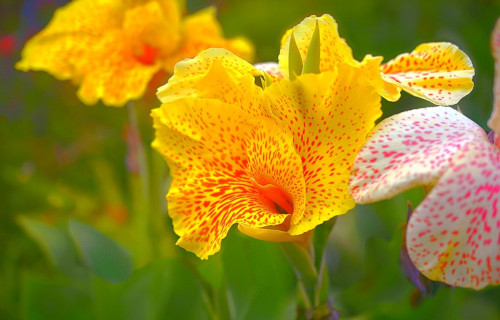
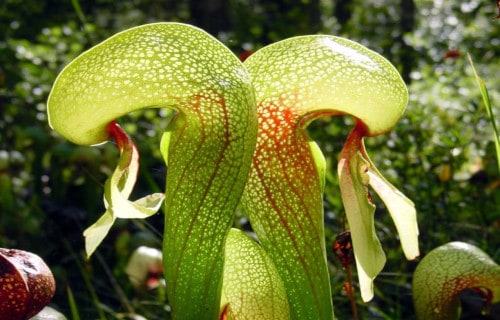
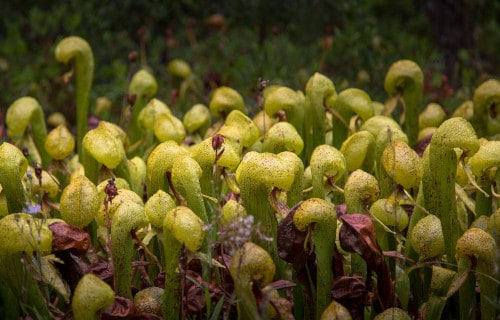
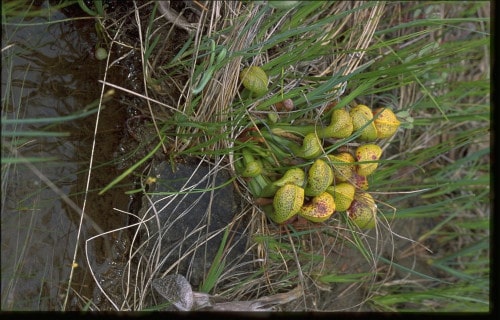
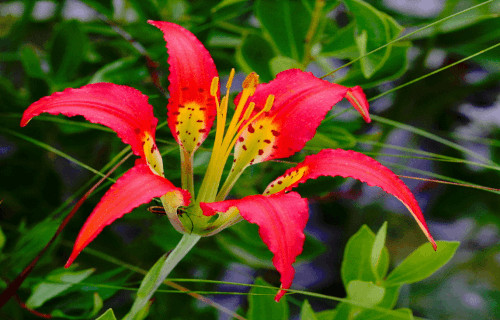
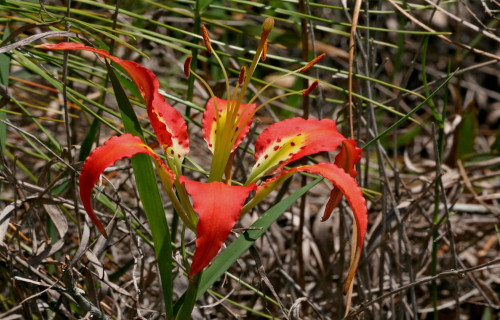
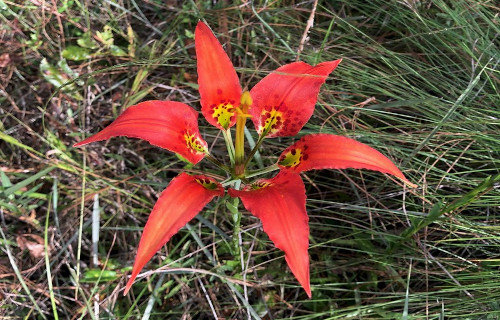
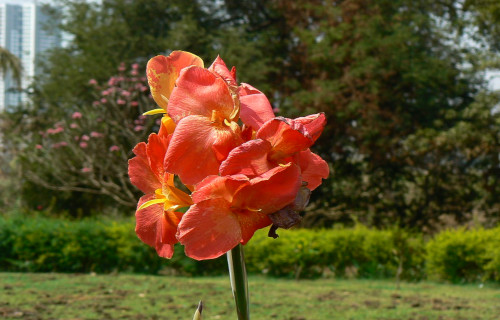
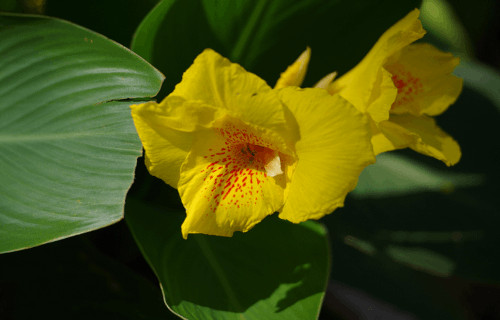
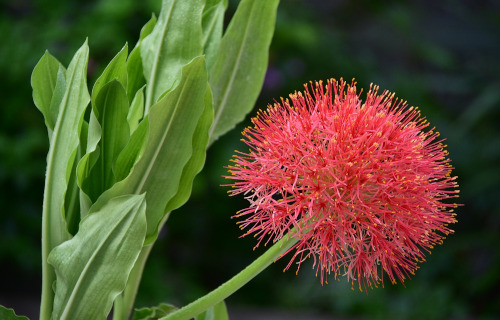
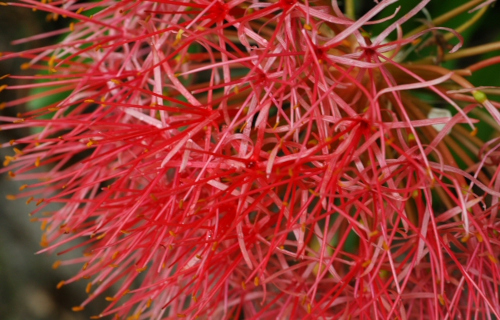
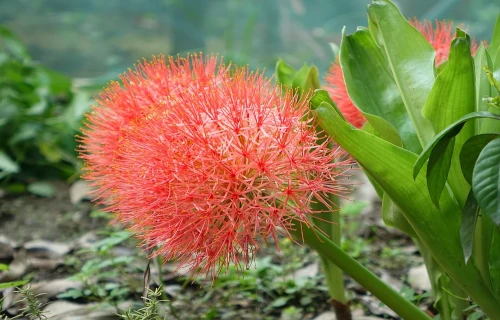
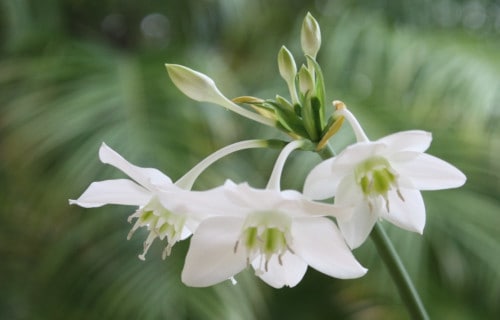
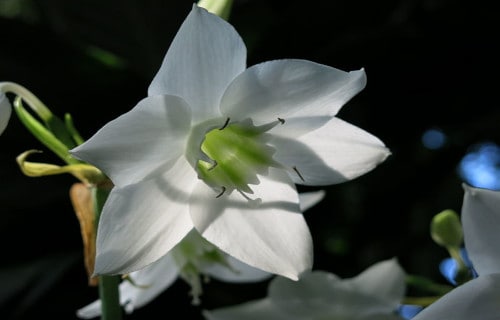
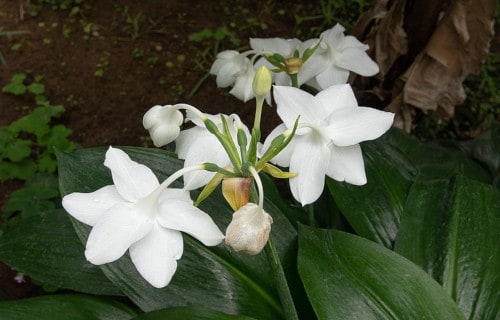
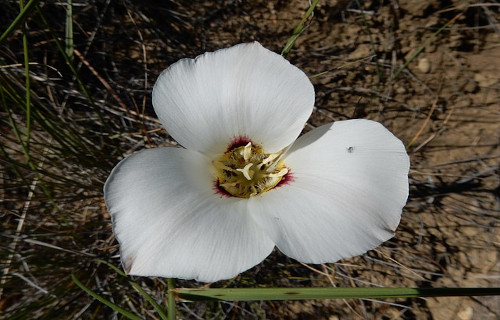
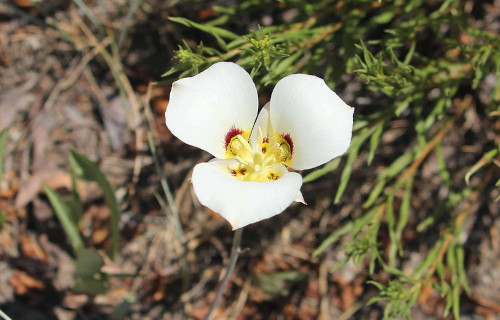
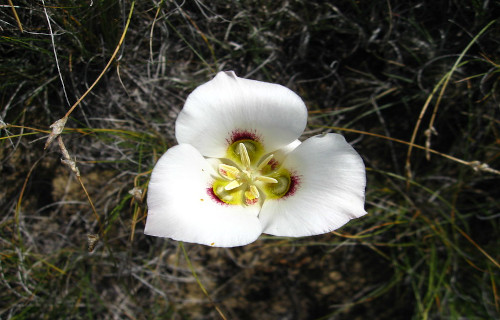









Leave a Reply